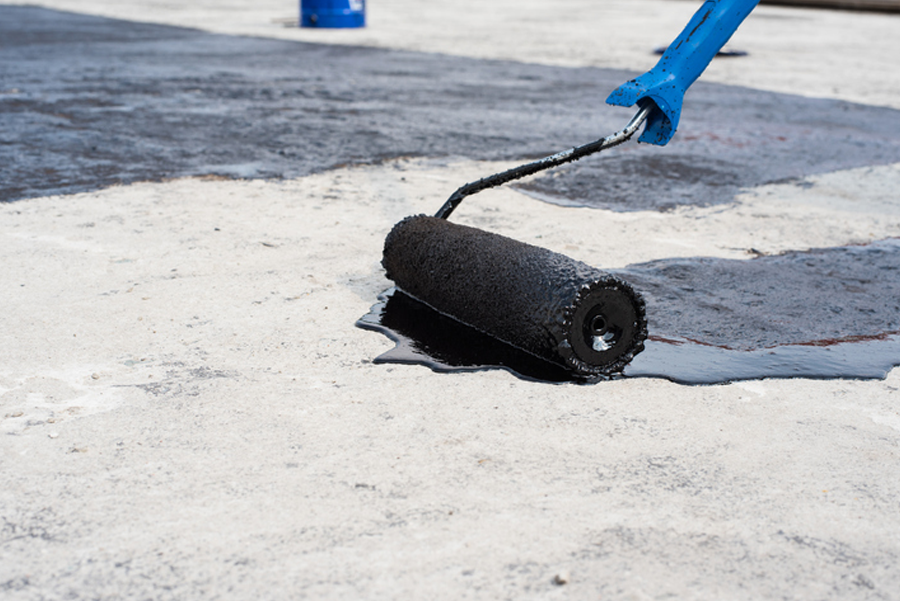
A waterproofing primer’s purpose is to ensure the substrate is fully sealed and prepared to receive a coating. It also also allows for excellent adhesion between the membrane and the substrate by providing a good key. Additionally a primer can provide a good barrier between the existing substrate and the waterproofing membrane. Waterproofing primers are mainly used on porous materials, and they tend to make the surface more solid and able to accept a waterproofing membrane.
Primers can come as one or two-part systems. Primers are an adhesion promoting product which can also act as a blocker. An example of this would be stopping bitumen bleed from a felt roof. There are a number of different primers available for specific substrates.
The Importance Of Peel Tests Before Applying A Waterproofing Membrane
Although there are many universal primers which are suitable for most surfaces, there are cases where a primer is not necessary. This means a peel test should always be carried out to identify if a primer is necessary. Typically, old felt and asphalt are the most common products that fall into this bracket. However, it is always good working practice to apply a primer as it will not only stop bitumen bleed in the long run, but enable optimum coverage of liquid. Therefore saving time and money.
A peel test is incredibly important and is part of what is commonly summarised as ‘good working practice’. Not carrying out a peel test could have dire financial consequences, both short and long term. For instance, some membranes simply do not adhere as certain substrates require a primer for adherence. So, what might initially appear to be a cost saving shortcut could result in the waterproofing membrane peeling away after just a few weeks or months. Potentially resulting in astronomical costs.
This would be due to the cost of removing the waterproofing membrane. Applying primer to the substrate then re-applying a waterproofing membrane. In effect this would more than double the cost of the project, with materials and labour needing to be paid twice (plus the cost of removing the defective membrane and priming).
If a waterproofing primer was used from the start of the project would have been delivered on time and within budget. Another consequence of not using a waterproofing primer when it should have been is site disruption. The removal of a defective waterproofing membrane would lead to other trades being affected. This would lead to further repercussions in terms of time and budget.
A primer also makes the surface stronger and smoother due to the epoxy content. There are a number of different primer types such as:
Single Component Porosity Primers
These are typically used to seal completely dry concrete and cementitious surfaces. They can also be used on asbestos and brickwork.
Epoxy Type Primers
These can be used to seal moist concrete. It is always best however to allow the concrete to not be coated for at least 28 days as sealing moisture is considered by many not to be good working practice. However, the way modern construction is carried out means rapid solutions are required and modern primers which can deal with moist concrete surfaces are available.
PU Primers
These are normally one component, low viscosity liquids which cure due to the humidity in the atmosphere. They are especially effective when used for porous concrete and wood.

